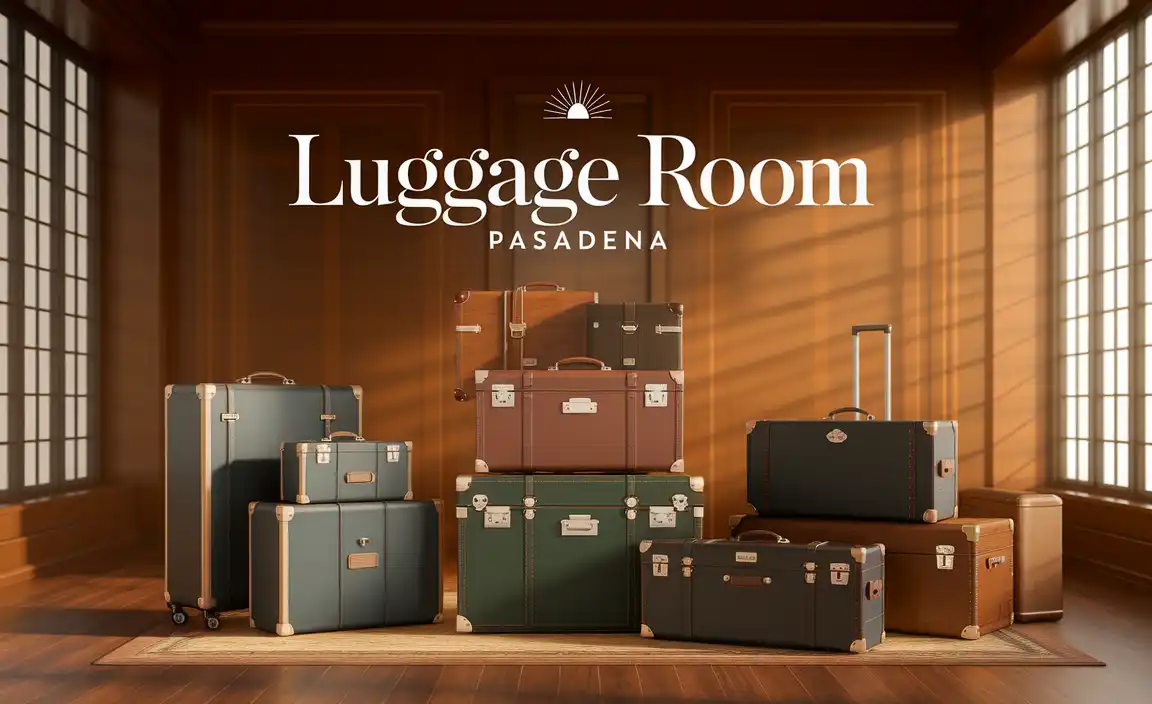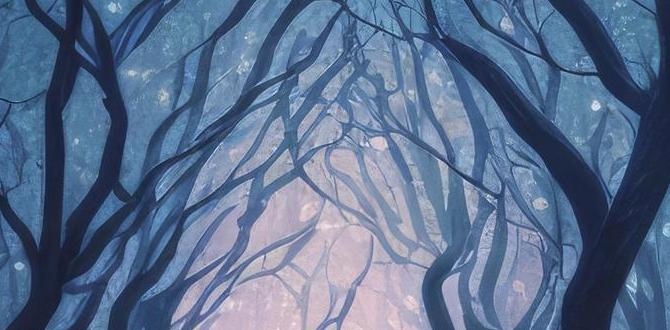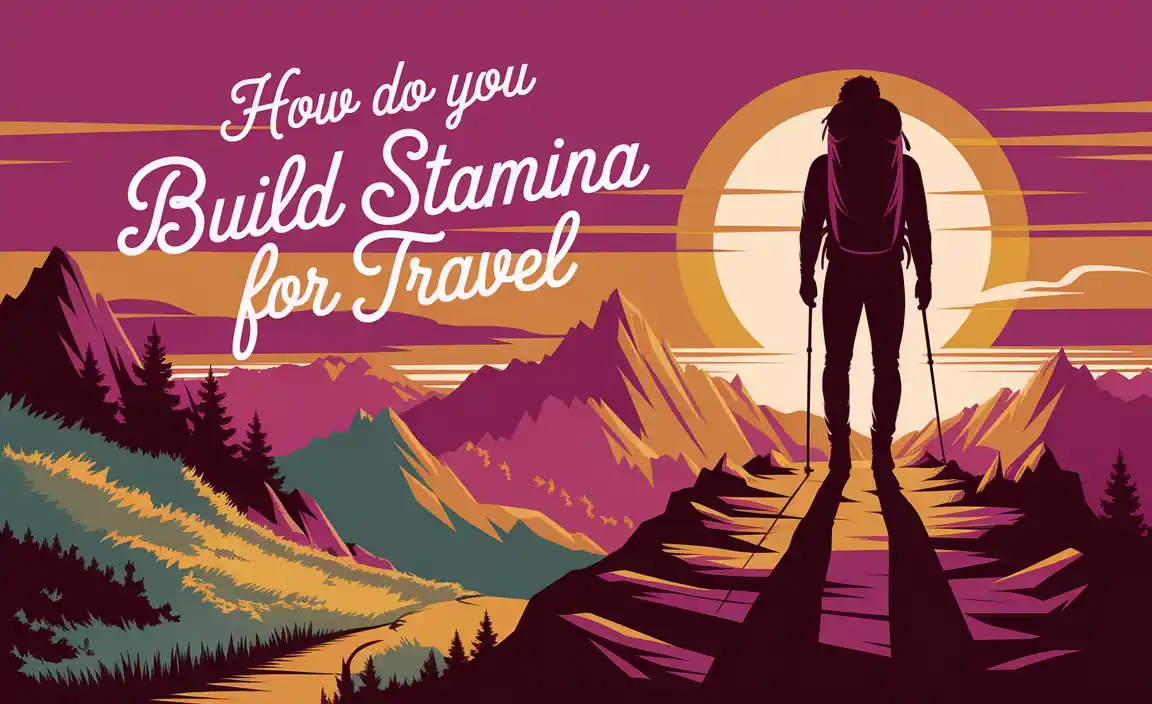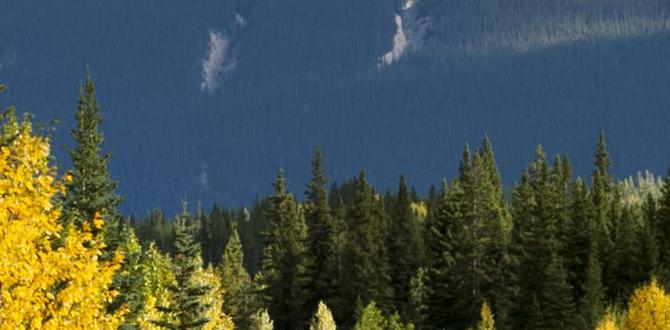Discover the wonders of the Atacama Desert without spending a dime! Explore incredible landscapes, unique natural phenomena, and stargazing opportunities that are absolutely free. This guide reveals the best essential adventures for budget-conscious travelers.
The Atacama Desert, a land of extremes and unparalleled beauty, might seem like a place that requires significant investment to experience. But what if I told you that some of its most breathtaking sights and unforgettable adventures come at no cost? For us travelers who love to explore deeply without breaking the bank, finding Atacama Desert free things to do is like discovering hidden treasure. It’s about experiencing the raw, untamed spirit of this incredible region with simple, accessible methods. Don’t let cost deter you from the adventure of a lifetime. This guide is designed to show you precisely how to unlock the magic of the Atacama, focusing on experiences that rely on your sense of wonder, not your wallet. Get ready to explore the essential, free adventures that await you.
—
Your Ultimate Guide to Atacama Desert Free Things
Planning a trip to the Atacama Desert can be incredibly exciting. Known as the driest non-polar desert in the world, it offers lunar landscapes, vibrant salt flats, and some of the clearest night skies on Earth. While many guided tours can be pricey, there are fantastic ways to experience the essence of the Atacama without spending a fortune on excursions. This guide is designed for the savvy traveler, the family on a budget, or anyone who believes the greatest adventures often come from simple exploration. We’ll cover everything from natural wonders you can witness on your own to local experiences that enrich your understanding of this unique desert.
Embracing the Wonders: Free Attractions in the Atacama
The Atacama is a place where nature takes center stage, and often, the most spectacular performances require no ticket. Many of its most famous attractions can be appreciated from viewpoints or through self-guided exploration, especially when combined with smart planning.
Valle de la Luna (Moon Valley) and Valle de la Muerte (Death Valley)
While often visited with guided tours, these iconic valleys offer stunning vistas that can be partially appreciated from public access points. The surreal rock formations, salt crusts, and sand dunes truly evoke a lunar landscape.
What to Expect: Vast, arid expanses with unique geological features sculpted by wind and time. The colors change dramatically throughout the day, especially at sunset.
How to Experience for Free (Partially): You can often view the entrances and surrounding areas of Valle de la Luna and Valle de la Muerte from public roads. For a truly free experience, explore the outskirts and surrounding areas accessible without entry fees. Driving or cycling in the vicinity can still offer spectacular views and photo opportunities. Many visitors report that even the views from the road leading up to these areas are breathtaking.
Pro-Tip: Pack plenty of water and wear sun protection! Even a short walk around the accessible peripheries can be intense under the desert sun.
Salar de Atacama (Atacama Salt Flat)
This is the largest salt flat in Chile and a vital ecosystem. While accessing the heart of some lagoons might require paid entry, exploring the fringes and witnessing its sheer scale is entirely free.
What to Expect: An endless expanse of white salt, shimmering under the sun. You might spot flamingos wading in the shallow salt lagoons.
How to Experience for Free: Drive or cycle along the roads that skirt the Salar. Many viewpoints offer incredible panoramic scenes. Keep an eye out for areas where the salt crust meets the arid land. The sheer vastness is awe-inspiring.
Flamingo Spotting: Laguna Chaxa, a part of the Salar, is a popular spot. While there’s a small entrance fee to enter the reserve, you can often spot flamingos from the roads near the salt flats, especially in the early morning or late afternoon. Listen for them and look for their distinctive pink hues against the white landscape.
Stargazing: The Atacama’s Celestial Gift
The Atacama Desert is renowned globally for its incredibly clear skies, making it one of the premier stargazing destinations on Earth. This is perhaps the ultimate Atacama Desert free thing to do.
Why it’s Special: The high altitude, minimal light pollution, and dry atmosphere create perfect conditions for observing constellations, planets, and the Milky Way in stunning detail. The European Southern Observatory (ESO) has major facilities here, a testament to its astronomical significance.
How to Experience for Free:
San Pedro de Atacama: Step just outside the town limits in any direction. Find a spot away from the immediate town lights, lay down a blanket, and look up. The immensity of the night sky will astound you.
Bring a Red-Light Flashlight: This preserves your night vision. You can find simple red-light flashlights at camping or outdoor stores, a handy accessory for any traveler.
Learn the Constellations: Many free stargazing apps for smartphones can help you identify stars and planets. Download one before you go!
ESO Public Access: While professional observatories have restricted access, the quality of the sky is palpable from anywhere in the desert. Some visitor centers or viewpoints outside of town might offer basic information or designated dark-sky viewing spots.
Pukará de Quitor
This ancient pre-Inca fortress offers a glimpse into the region’s history and provides a fantastic vantage point over the surrounding landscape.
What to Expect: Stone ruins and structures perched on a hilltop, offering panoramic views of the oasis and desert.
How to Experience for Free: The Pukará de Quitor site offers free access to its grounds. You can walk among the ruins and climb to the top for impressive views without any entry fee. It’s a great way to combine historical exploration with natural scenery. Getting there can be done by walking or cycling from San Pedro de Atacama, adding to the adventure.
Lagunas Escondidas de Baltinache (Hidden Lagoons of Baltinache) (Use caution: Access may have a small fee)
While many visitors opt for guided tours, a savvy traveler might find ways to appreciate the general area or discover similar, less-known lagoons. It’s important to note that direct access to the famous Baltinache lagoons usually involves a fee. However, exploring the general region can still be rewarding.
What to Expect: A series of seven surreal salt lagoons with incredibly high salinity, allowing you to float effortlessly.
How to Experience for Free (or Low Cost): Research local information centers or ask residents about public access points to less-developed salt lagoons in the area. Sometimes, simply driving or hiking in the broader vicinity can reveal smaller, more secluded salt pans or natural pools that offer a taste of the experience without the direct cost of the main attraction. Always prioritize safety and respect private property. For this specific lagoon, be prepared that most accessible points have an entrance fee.
—
Budget-Friendly Exploration: Getting Around and Staying Prepared
Experiencing the Atacama for free is significantly enhanced by smart transportation choices and essential preparation. Being prepared not only saves money but also ensures your safety and comfort.
Transportation Essentials
Walking and Cycling: For attractions close to San Pedro de Atacama, like Pukará de Quitor, walking or renting a bicycle is an excellent, eco-friendly, and free/low-cost option. Bike rentals are readily available in town and are significantly cheaper than guided tours. This allows for spontaneous stops and a more intimate connection with the surroundings.
Public Transport (Limited): While direct public buses to all free attractions are rare, some local buses might service areas near popular sites. Research routes from San Pedro de Atacama to areas like Toconao or other smaller villages that might offer access points to salt flats or viewpoints.
Carpooling: If you’re renting a car, consider connecting with other travelers in hostels or online travel forums to share fuel costs. This can make exploring more remote free areas more feasible.
Packing for the Desert Adventure
Your comfort and safety are paramount. Even for free adventures, smart packing makes a huge difference.
Water is Key: The desert is extremely dry. Carry more water than you think you’ll need. A reusable water bottle is a must. For longer days, consider a hydration pack.
Sun Protection: This includes a wide-brimmed hat, sunglasses, and high SPF sunscreen. The sun’s rays are intense, even on cloudy days.
Layered Clothing: Days can be very hot, but temperatures can plummet dramatically after sunset. Pack light layers, including a warm jacket or fleece for evenings, especially if you plan to stargaze.
Comfortable Footwear: Sturdy walking shoes or hiking boots are essential for exploring any terrain, even short distances.
Snacks: While not directly an “essential” for free activities, having snacks on hand prevents the need for impulse buys in remote areas and keeps your energy up.
Basic First-Aid Kit: Essential for any trip, especially in a remote area. Include essentials for blisters, minor cuts, and pain relief.
Travel Diapers (Optional but Recommended for Peace of Mind): For travelers who may need them, packing adult or child diapers is a smart move for stress-free exploration. Knowing you have reliable protection means you can focus on the amazing sights and experiences without worry, especially on long days of exploration or during travel to and from the desert. Brands offering discreet, comfortable, and absorbent options can make all the difference for peace of mind. Consider options designed for long wear and sensitive skin. This is part of our Journey Essentials philosophy: preparing for comfort so you can enjoy the journey.
—
Local Flavors and Experiences (Mostly Free!)
Beyond the natural landscapes, connecting with the local culture can also be a rewarding and often free experience.
Exploring San Pedro de Atacama Town
The main hub for travelers, San Pedro, is charming and offers a glimpse into local life.
Wander the Streets: Simply strolling through the adobe streets, admiring the architecture, and observing daily life is a pleasant way to spend time.
Local Market: While purchasing goods costs money, browsing the local market (Mercado de Artesanías) is free. You can see local crafts, fresh produce, and get a feel for the local economy.
Church of San Pedro: The town’s historic church is a beautiful, simple adobe structure that is usually open to visitors and free to enter.
Observing Local Life and Customs
Engage with Locals (Respectfully): If opportunities arise, a friendly conversation with locals can offer invaluable insights into their way of life, traditions, and the challenges and joys of living in such a unique environment. Always be polite and respectful of their time and privacy.
Learn about the Atacameño Culture: Research basic information about the indigenous Atacameño people before your visit or look for informative (though likely paid) tours that focus on cultural heritage. Understanding their history adds a deeper layer to your appreciation of the region you’re exploring for free.
—
Stargazing Best Practices: Free Astronomy
The Atacama’s night sky is a spectacle you absolutely must not miss. Here’s how to optimize your free stargazing experience.
Night Sky Checklist:
Dark Location: Essential for seeing stars clearly.
Clear Skies: Check local weather forecasts for cloud cover predictions.
Moon Phase: A new moon (no moon visible) provides the darkest skies. A full moon can wash out fainter stars.
Comfort: A blanket or chair to sit on.
Warm Clothing: Temperatures drop significantly.
Red-Light Flashlight: To preserve your night vision for better viewing.
Stargazing App: To identify celestial objects.
Where to Go (Still Free):
Outskirts of San Pedro: As mentioned, simply walk or ride a bike a few kilometers out of town to escape the light pollution. The pan-American highway and smaller dirt roads offer many accessible spots.
Near Archaeological Sites: Some sites like Pukará de Quitor are quiet after dark and are good locations to get away from town lights.
Along the Road to Valle de la Luna: While not in the valley, the roads leading to it are remote and offer fantastic dark skies.
Tip: Look up and allow your eyes to adjust. It can take 15-20 minutes for your eyes to become fully adapted to the darkness, revealing far more stars than you initially see.
—
Understanding the Atacama’s Environment: Safety and Respect
Exploring the Atacama, even its free attractions, requires awareness and respect for this fragile ecosystem.
Environmental Considerations
Leave No Trace: This is paramount. Take absolutely everything you bring back with you, including wrappers, water bottles, and any other trash.
Stay on Marked Paths (if any): Where paths exist, follow them to protect the delicate desert crust and vegetation.
Respect Wildlife: Observe any animals from a distance. Do not feed them or disturb their habitats. The flamingos, vicuñas, and various bird species are protected.
Water Conservation: The Atacama is extremely dry. Be mindful of your water usage, even if you’re not paying for access to water sources.
Personal Safety in the Desert
Hypothermia and Heatstroke: These are real risks. Be prepared for both extreme heat during the day and cold at night. Hydrate constantly and dress in layers.
Altitude Sickness: San Pedro de Atacama is at about 2,400 meters (7,900 ft), but many attractions are higher. Acclimatize slowly, avoid alcohol and heavy meals on your first day, and stay hydrated.
Navigation: If venturing off main roads, carry a map, a compass or GPS device, and inform someone of your intended route and return time. Mobile phone signal is unreliable in many areas.
* Solitude: While exploring for free, you might be more isolated. Ensure you have sufficient supplies and are well-prepared.
—
Table: Free vs. Low-Cost Atacama Adventures Comparison
This table helps visualize the value of free and low-cost options.
| Activity | Estimated Cost (USD) | Key Experience | Best For | Notes |
| :——————————- | :——————- | :————————————————— | :—————————————————— | :——————————————————————- |
| Stargazing | $0 | Unparalleled views of the night sky | Everyone | Requires dark skies, clear night, and warm clothing. |
| Exploring San Pedro Town | $0 | Local culture, adobe architecture, markets (browsing) | Casual exploration, cultural immersion | Easy to access, safe, and offers a glimpse of daily life. |
| Pukará de Quitor | $0 | Ancient ruins, panoramic views | History buffs, photographers, view seekers | Short walk/bike ride from town. |
| Valle de la Luna/Muerte (Outskirts) | $0 | Lunar landscapes, unique rock formations | Photographers, landscape lovers | Views from public roads; not the full inside tour experience. |
| Salar de Atacama (Fringes) | $0-$5 (for parking) | Vast salt flats, potential flamingo spotting | Nature lovers, photographers | Drive or cycle along accessible routes. |
| Cycling around Oasis | $5-$15 (bike rental) | Greenery amidst desert, local villages | Active travelers, those seeking local life | Offers more flexibility than walking. |
| Local Picnic Lunch | $5-$10 (food) | Enjoying nature with your own food | Budget travelers, nature lovers | Pack wisely from San Pedro’s markets. |
—
Frequently Asked Questions (FAQs)
Q1: Is it really possible to see amazing things in the Atacama Desert for free?
Yes, absolutely! The Atacama’s most stunning features are its natural landscapes and night skies, which are free to admire. Stargazing, exploring the outskirts of famous valleys, and enjoying the town of San Pedro are all wonderful free experiences.
Q2: What is the best time of year for free stargazing in the Atacama?
Any time of year can offer incredible stargazing due to the region’s consistent clear skies. However, avoiding the full moon phase will give you the darkest skies and the most spectacular view of constellations and the Milky Way.
Q3: How can I get to free attractions from San Pedro de Atacama?
For attractions close to town, like Pukará de Quitor, walking or renting a bicycle are the best free or low-cost options. For slightly further areas like the Atacama Salt Flat fringes, you might need to consider carpooling or research limited public transport routes, or simply enjoy the views from roads accessible by car.
Q4: What should I absolutely not miss if I’m on a strict budget in the Atacama?
You should not miss the free stargazing, exploring the town of San Pedro de Atacama, and visiting Pukará de Quitor. Also, just driving or cycling around the fringes of the Salar de Atacama can offer breathtaking and free vistas.
Q5: Are there any hidden dangers when exploring the Atacama for free?
The main dangers are environmental: extreme temperatures (hot days, cold nights), dehydration, and intense sun. If you venture further afield, navigation can be a challenge. Always carry plenty of water, sun protection, warm layers, and inform someone of your plans. Stick to accessible areas and be aware of your surroundings.
Q6: What essential items should I pack for free adventures?
You’ll need plenty of water, sun protection (hat, sunglasses, sunscreen), comfortable walking shoes, layered clothing for temperature changes, and snacks. For stargazing, a red-light flashlight




